“So, since you like taking pictures, would you like to come and take some photos at our next ice hockey match?”. That simple request led to a new photographic adventure for me and an exacting workout for my Leica SL. It was my first attempt at photographing ice hockey. How did it go, and what did I learn? Read on and find out.
Photographing ice hockey
The fastest team sport in the world. Surely, I’ll need at least 10 fps to capture the action. And the best autofocus, too. At least the arenas look well lit on TV — or so I thought at the time. Would my 70-200mm zoom be sufficient, or should I opt for something longer? I had just retired my Nikon gear in favour of a Leica SL Type 601, not known for its autofocus performance. “Um, yes, of course. I’d love to come!” Because who doesn’t love a challenge every now and again?
Light
Amateur sports events often contend with reduced lighting conditions, primarily due to limited budgets, ageing infrastructure, and inadequate facilities. Some of these venues lack the sophisticated lighting systems found in professional arenas you see on TV. The result is a dimly lit environment.
This is not necessarily a hindrance for spectators, players, and referees. As the person photographing ice hockey, though, I can’t get enough light. I’m aiming for a large depth of field at very short exposure times. Shooting at f/5.6 at 1/800s to 1/1250s means the ISO goes through the roof, like a missed slap shot rockets into the stands behind the goal.
The artificial lighting systems used in ice rinks frequently consist of high-intensity discharge (HID) lamps or fluorescent fixtures. These can produce harsh, unnatural lighting conditions, resulting in strong shadows and odd colour casts. Worse still, they introduce flickering effects, complicating the process of achieving accurate colour reproduction and exposure.
Furthermore, the colour temperature of artificial lighting can vary significantly between different rinks and even between different fixtures within the same facility. This variability can pose challenges when white balancing photographs, as colours may appear skewed or inaccurate without proper adjustment.
It gets worse
However, when I turn up at my first match day, I find an outdoor ice rink that is spanned by a massive, ageing tent roof. And the lights are on, too. Lots of light. And all of it wrong! These combined lighting conditions significantly increase the challenge of photographing ice hockey, adding another layer of complexity to the process.
Natural light streaming in can create unwanted glare or reflections on the ice surface, which can detract from the clarity and detail of the images. Photographers must carefully position themselves to minimise these distractions and capture clean, unobstructed shots of the action.
Location
Sun in the back, then. Easy, right? Surveying the expanse of the ice rink, I carefully scout for an ideal spot to position my monopod and myself. The team bench immediately catches my eye. It boasts an optimal vantage point, situated equidistantly between both goals. This offers prime real estate for my trusty 70-200mm lens.
However, two not insignificant complications arise: today’s glaring sun opposite messes with my exposure, and my preference lies in capturing the players head-on, rather than from a side or rear angle.
To ensure the safety of spectators, ice rinks are (except for the team benches) surrounded by transparent perspex shielding. This can reach up to 2 meters (6ft 6in) in height. While providing an opportunity to capture players head-on, from relative safety, it also presents challenges for photographing ice hockey matches.
Battered barriers
Ice hockey, renowned for its physicality, sees intense battles for puck possession, inevitably taking a toll on the relatively soft material of the shielding. Moreover, the velocity of slap shots, which can reach speeds of up to 160 km/h (100 mph), further emphasises the forceful nature of the game.
Despite the team’s as yet unfulfilled aspirations to ascend to professional status, the power behind their shots is undeniable, as they quite literally make their mark on the protective barriers.
Situated in the heart of a public park, where accessibility is a hallmark, this specific ice rink stands as a testament to communal enjoyment. Alas, amid its welcoming embrace, certain individuals, in a misguided display of self-expression, have defaced its surroundings. Regrettably, these “artists” have left their mark not of creativity but of incompetence and self-centredness, further marring the once pristine view for all who gather to witness the athletic endeavours of ice hockey.
Emotion
When invited to document the match, the objective is to produce high-quality imagery tailored for the players’ social media platforms. The emphasis is on dynamic poses, compelling action shots, and the portrayal of the intense competition. Most importantly, they must convey the accompanying facial expressions. Wait, what? Facial expressions?
Capturing sharp, well-focused images while photographing ice hockey is challenging. This is particularly so when players are wearing face masks, hurtling towards you at 10-25 km/h (approx. 5-15 mph). The protective design of face masks can obstruct the visibility of player’s eyes. This makes it difficult for camera autofocus systems to accurately lock onto the intended focal point.
Helmet headaches
Helmets pose a unique challenge for those interested in photographing ice hockey. The Leica SL’s autofocus mechanism relies on detecting contrast and object recognition within the frame, to determine where to focus. However, when a player’s eyes are partially or fully concealed behind a face mask, the lack of visible contrast or distinct features can confuse the autofocus system, leading to focus inaccuracies.
Moreover, the reflective surfaces of face mask visors cause glare or reflections, further complicating autofocus performance. As a result, the reflective surface rather than the player’s eyes are in focus, yielding blurred, improperly focused images.
Immersive experience
To capture images that evoke a sense of presence on the ice rink, I wanted to employ techniques that immersed the viewer in the action and atmosphere of the game. Ideally, making them feel as if they’re on the ice with the protagonists.
I used a wide-angle lens (I find 35mm sufficient) to capture expansive views of the ice rink. This allows viewers to feel as though they are part of the arena. Wide-angle shots can convey the vastness of the playing surface and the intensity of the game unfolding within it.
Getting the lowdown
Positioning the camera at a low angle captures shots from the players’ perspective. Though it proves challenging, this results in a sense of immediacy and immersion. Personally, I’ve found that maintaining a perspective roughly at eye level with the players yields favourable results. Compared to shots captured from higher vantage points in the stands, this approach offers a much more intimate view.
Action shots capture moments of intense action and movement to convey the energy and excitement of the game. I strive to freeze the motion of players in mid-stride or mid-shot to create dynamic and engaging images that make viewers feel as though they are part of the action.
However, players are ultimately responsible for taking ownership of their poses and presenting themselves photogenically!
Getting the shot (anyway)
At the outset, I mentioned that I love a challenge every now and again. I embraced the opportunity to tackle these obstacles head-on. Employing a multi-faceted approach, I navigated through the complexities by amalgamating various tactics as needed. My strategy revolved around a delicate balance of trickery and acquiescence, culminating in outcomes that, while not flawless, were deemed satisfactory under the circumstances.
Use fast lenses
Fast lenses with wide apertures allow photographers to capture more light, enabling them to maintain faster shutter speeds and lower ISO settings in low-light conditions. Remember, though: limited depth of field requires a good autofocus hit rate.
Set exposure
My preference typically leans toward Manual mode, balancing aperture at f/5.6, shutter speed at 1/800s, and capping ISO settings at a maximum of 3200. Given the challenging lighting scenarios often encountered during low winter light and unfavourable conditions, I rely on post-processing capabilities to rectify exposure deficiencies, frequently necessitating exposure adjustments of up to 2 or 3 stops.
ISO noise
It’s awful. The presence of noticeable ISO noise poses a considerable challenge, instilling a desire to set a maximum ISO of 800. While certain denoising software solutions can offer assistance, they face challenges in this setting. Grappling with the complexities introduced by the presence of face masks, sometimes yields overly aggressive results.
Autofocus and embracing Imperfection
Presently, I rely on iAF paired with a (slow) continuous shooting rate of 6 frames per second, allowing for refocusing between shots. Acknowledging a degree of inevitable waste, I’ve come to terms with the reality of accepting a margin for error. Fortunately, autofocus capabilities have shown significant improvement over time, thanks to ongoing firmware updates.
Optimise for Social
While some images may exhibit slight softness or noise, I export them at 2048px (long side) to ameliorate that. Their intended use is for social media platforms, where they’ll be viewed predominantly on mobile devices with smaller screens. However, I remain flexible and amenable to exporting at larger sizes upon request (at the cost of some additional refinement), particularly if a player desires a higher resolution file, for example for printing purposes.
Adjust white balance
I manually adjust white balance before the game, choosing a setting that seems appropriate for the situation. I then leave it to the advanced editing features of my preferred software to sort it out where possible. They’re not so bad nowadays!
Experiment with different angles
Changing shooting angles and perspectives helps minimise the impact of harsh lighting and shadows. I can therefore capture more dynamic and visually interesting images. Optimal positions include the team benches, offering proximity to intense action for compelling close-up shots. Additionally, positioning oneself behind the goals facilitates capturing frontal shots of the players.
Finally, an elevated spot, shooting over the protective screen, can sometimes present another advantageous location. However, I exercise caution, and only select safe spots.
Capture emotion
I prefer to capture the players’ expressions, often positioning myself behind one of the goals. Despite the challenges posed by scratched or dirty spots, I can usually find a location that allows good visibility.
However, shooting through the protective screen comes with its drawbacks. These include reduced contrast, sharpness and colour shift, as well as unwanted reflections. Again, I fix it in post where possible, rather than missing many great shots!
Zoom and crop
Ice hockey stands as the fastest team sport globally, demanding both agility and precision. To reflect its dynamic essence, a photographer has to capture these features. While it’s tempting to be physically close to the action, consider zooming out slightly to encompass a broader perspective. This approach allows for greater flexibility in post-processing, enabling cropping to refine composition and highlight key moments effectively.
And lastly — no rest for the wicked!
Bear in mind the relatively static nature of scenes during timeouts.
Final words
So – ice hockey. Challenge accepted. Not the perfect equipment; not the perfect circumstances; not the perfect shots? Relax. It’s just a game! And many more since then… What equipment would you choose? Have you ever tried photographing fast sports before? If so, what was your experience?
Acknowledgement
A huge thank you to Lilly for the invitation and access to the Hamburger Sport Verein Ladies Ice Hockey team.
Want to contribute an article to Macfilos? It’s easy. Just click the “Write for Us” button. We’ll help with the writing and guide you through the process.

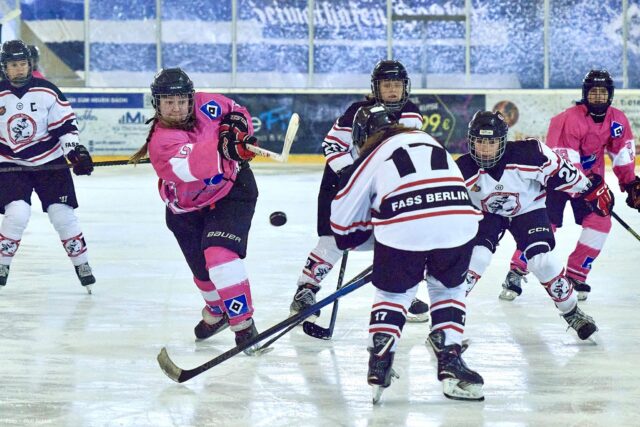
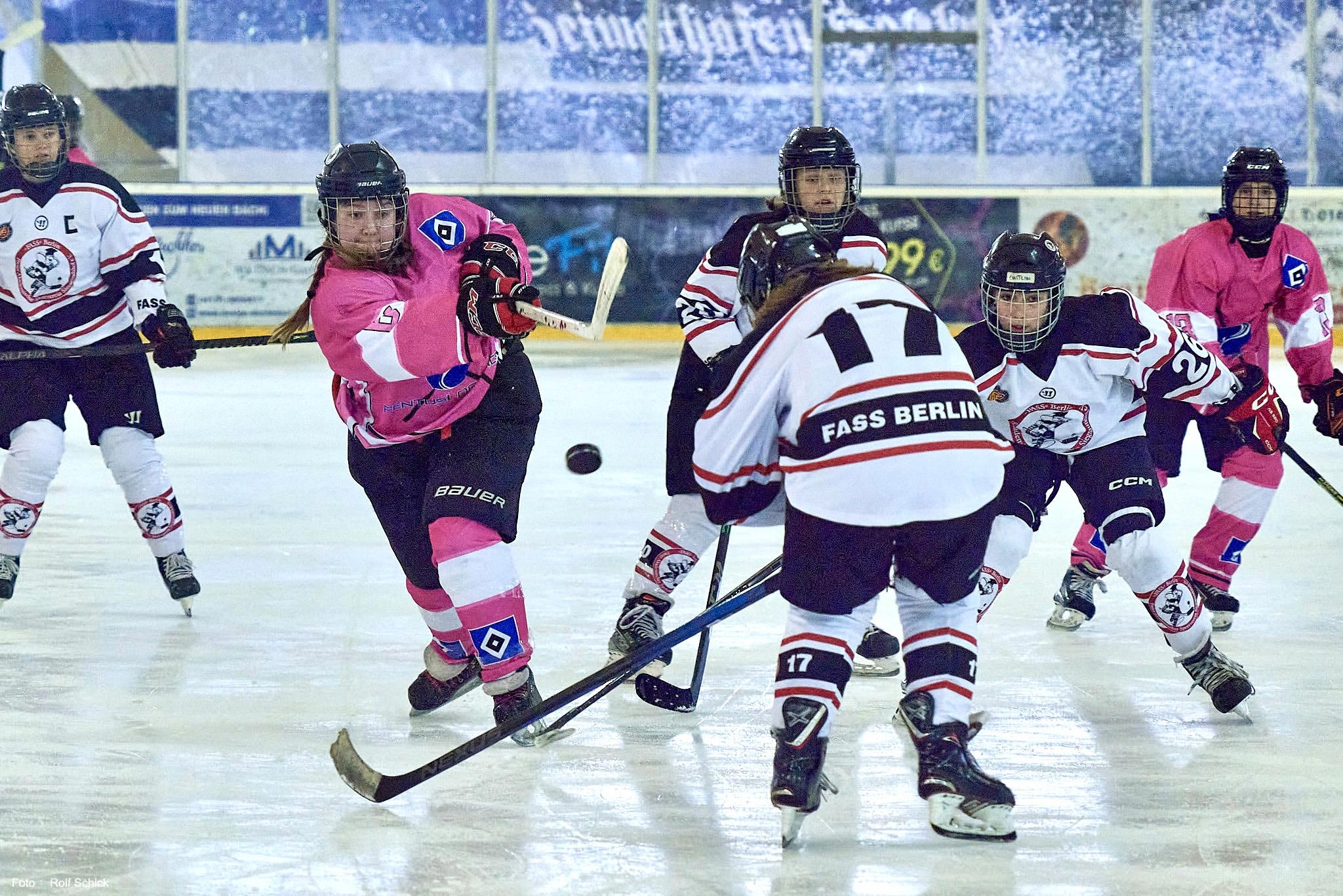
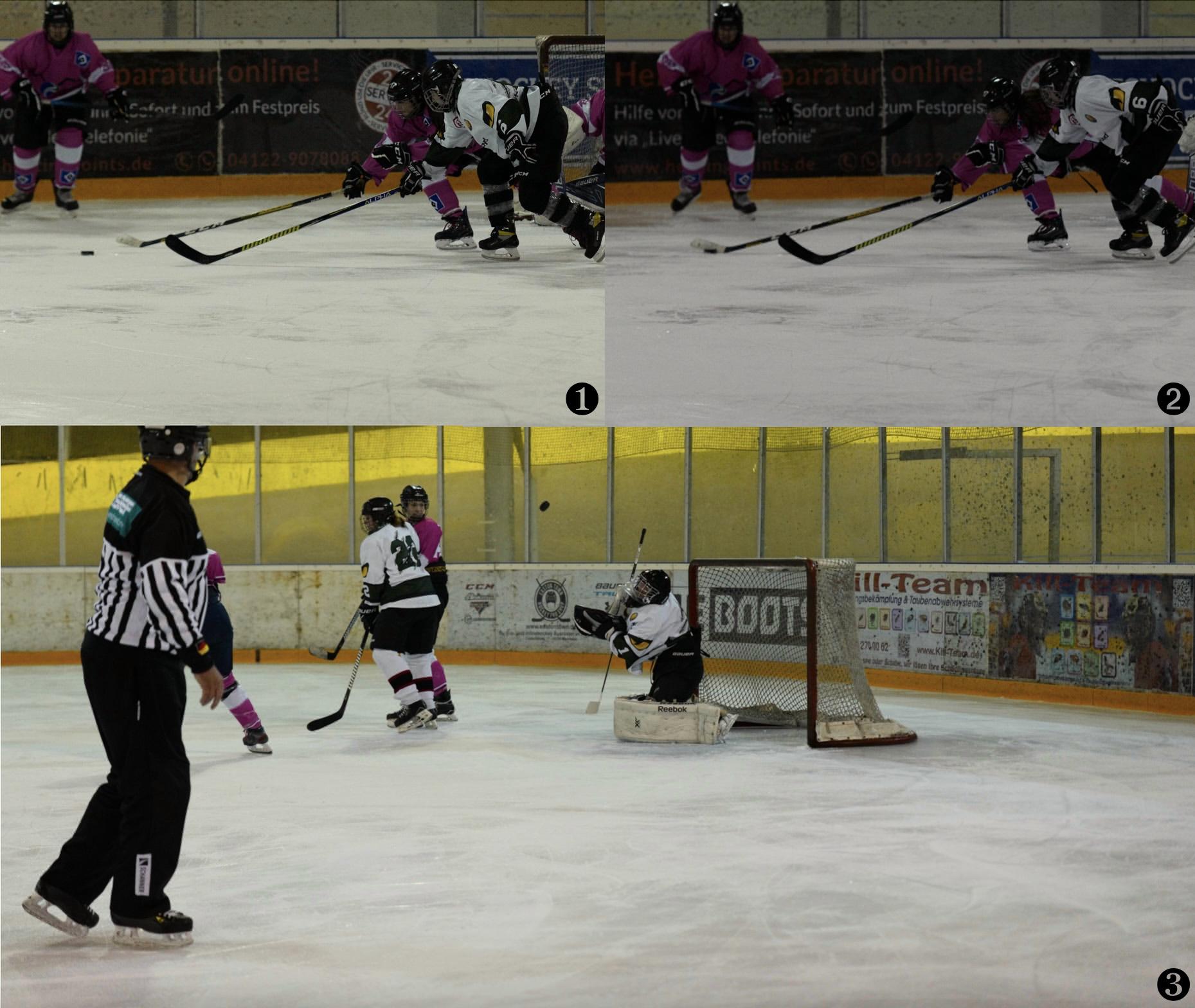
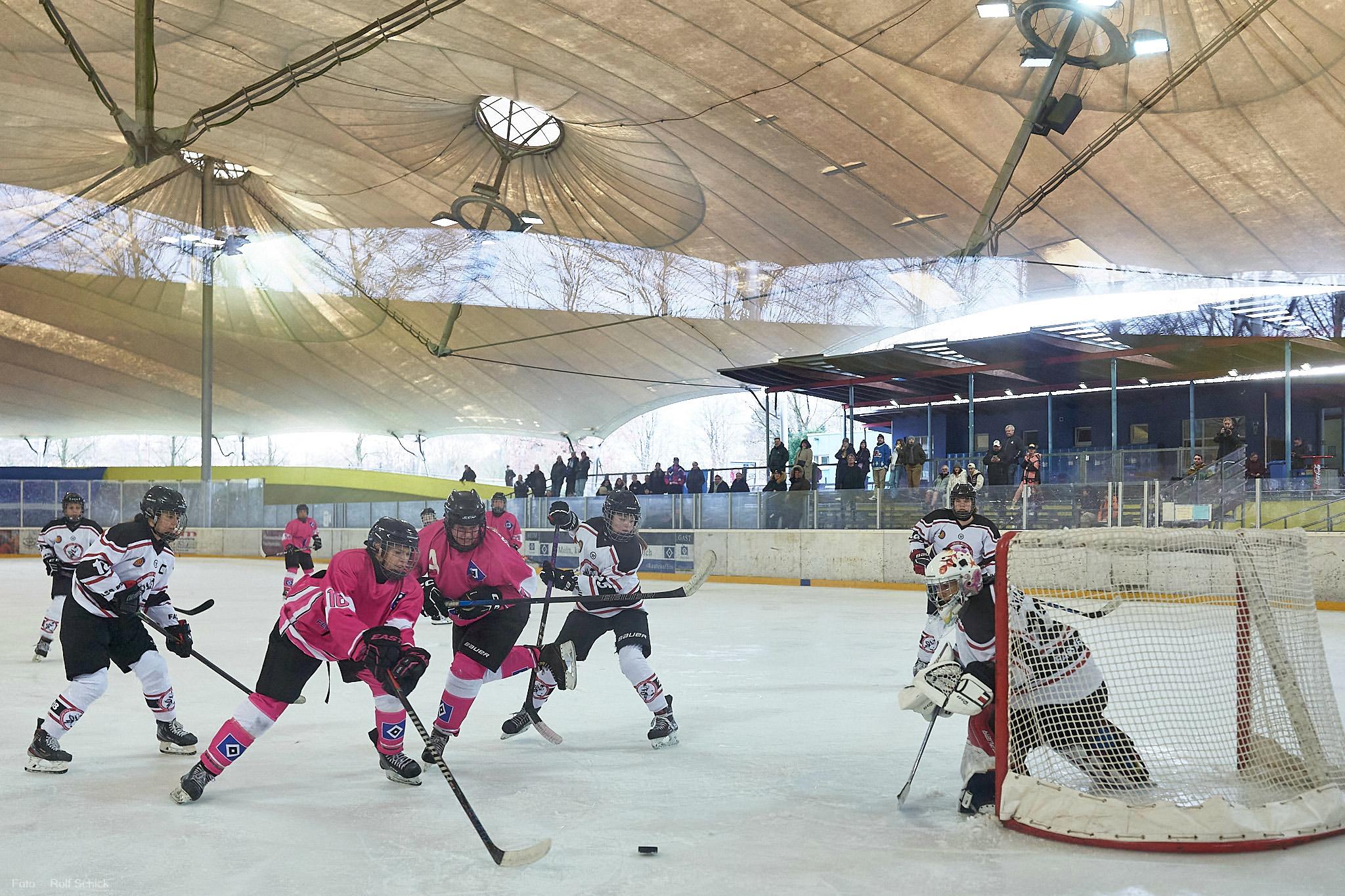
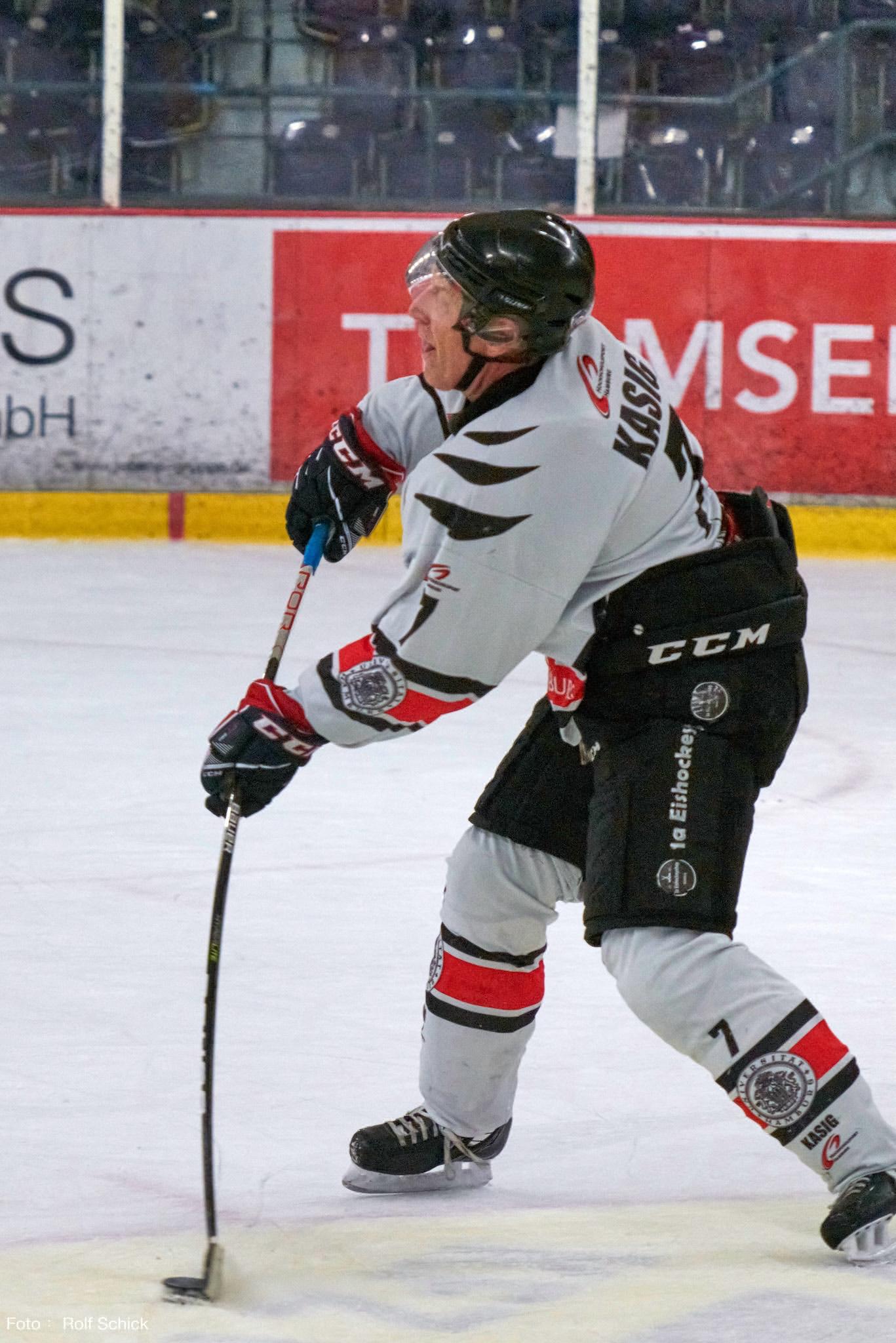
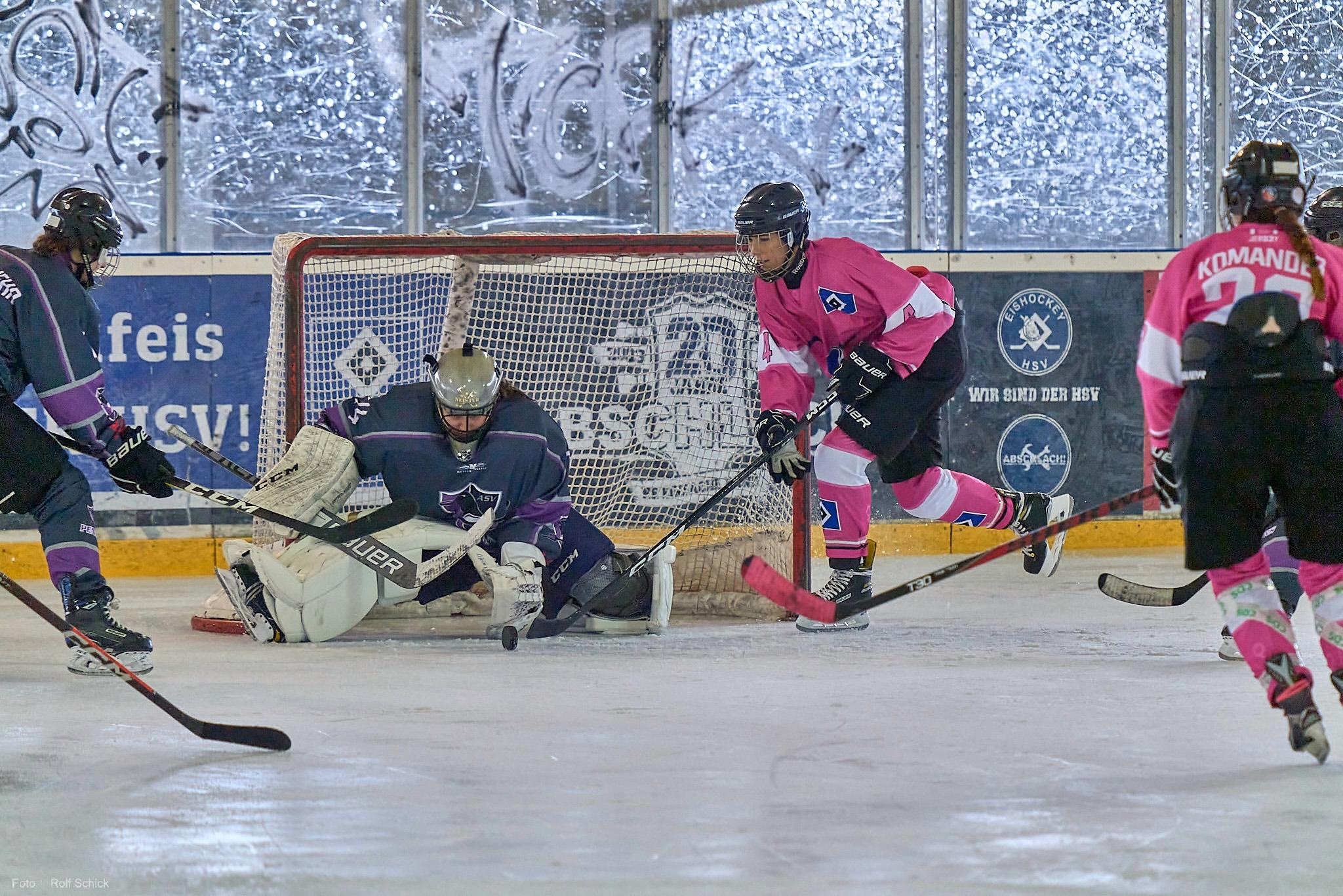
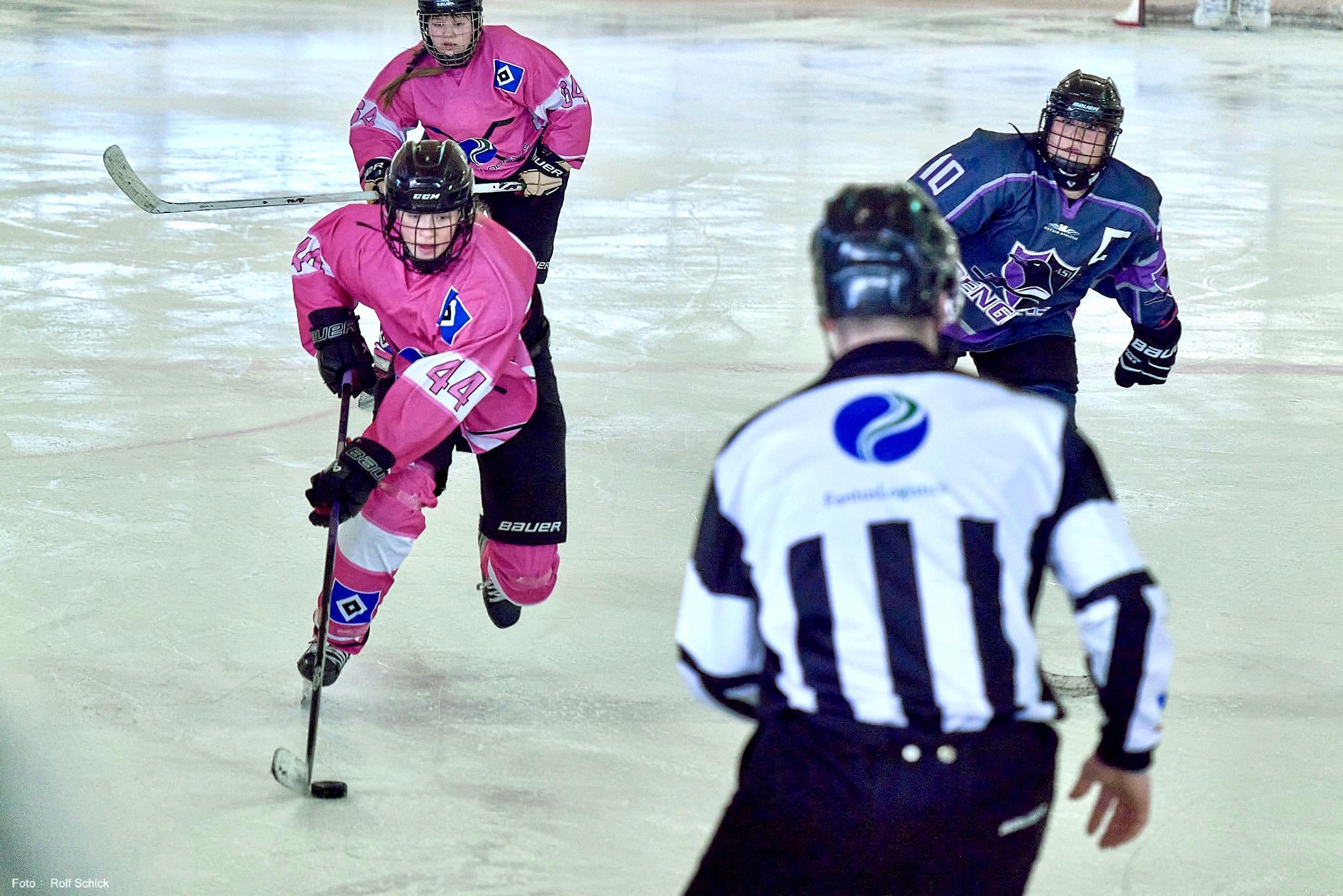
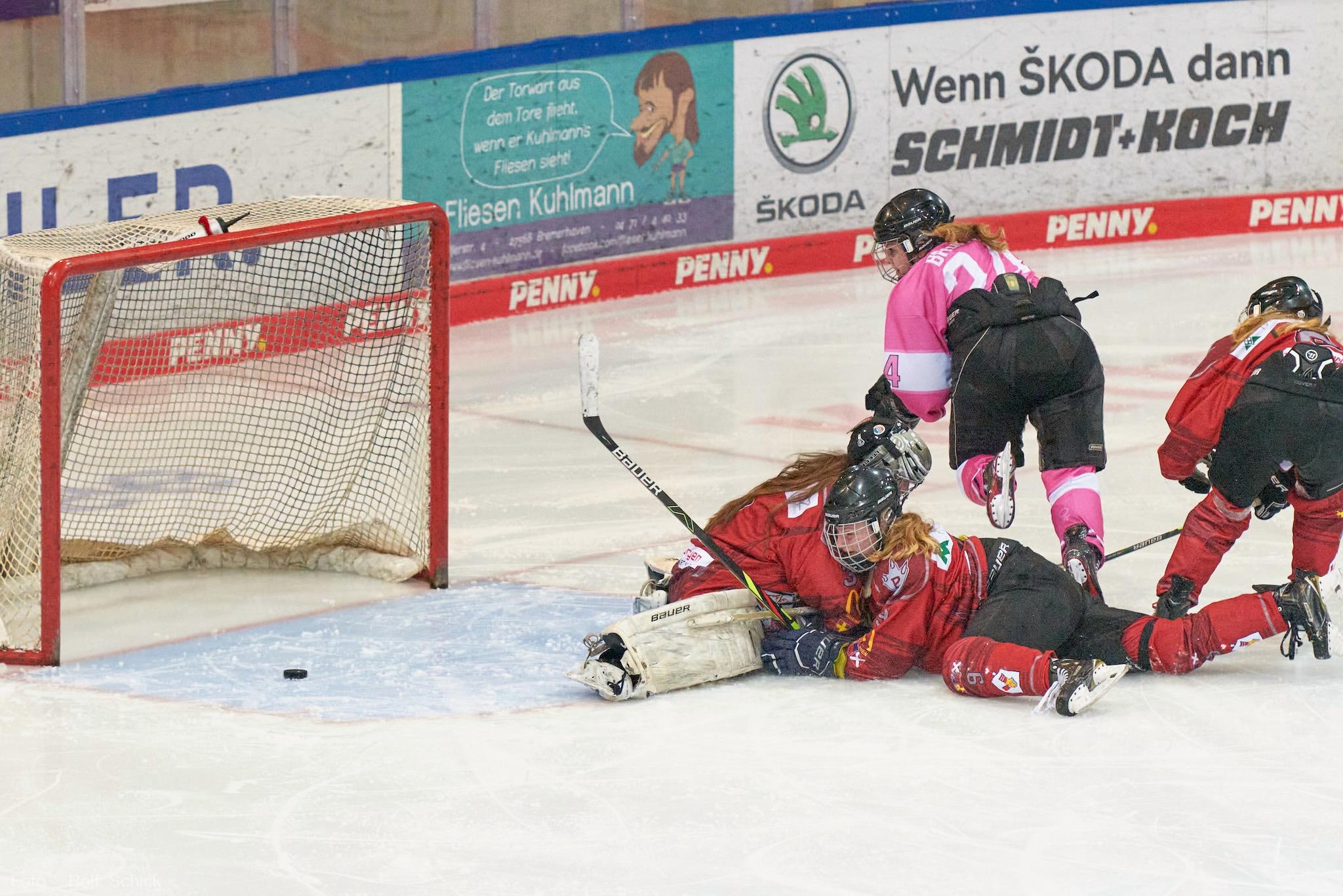
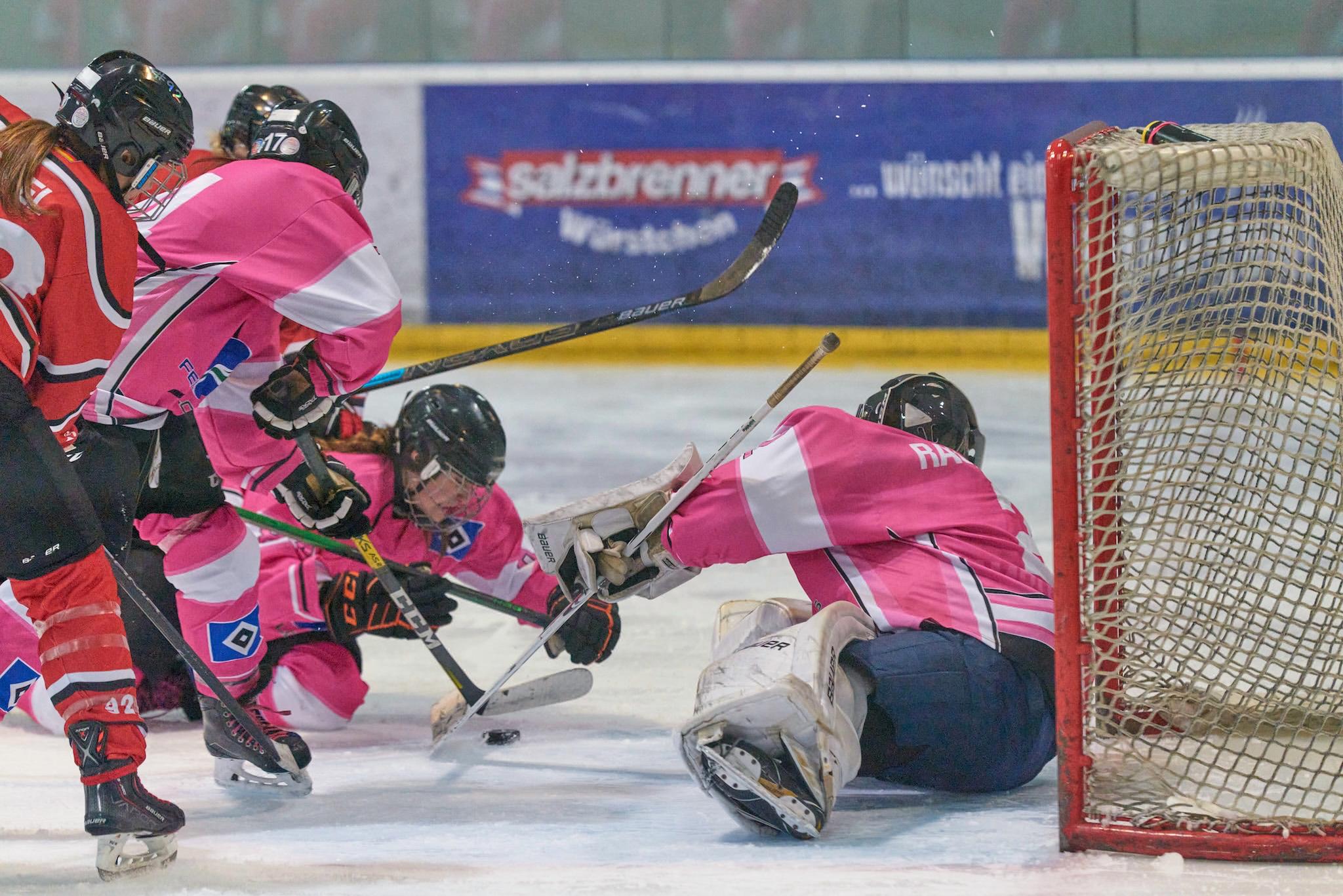
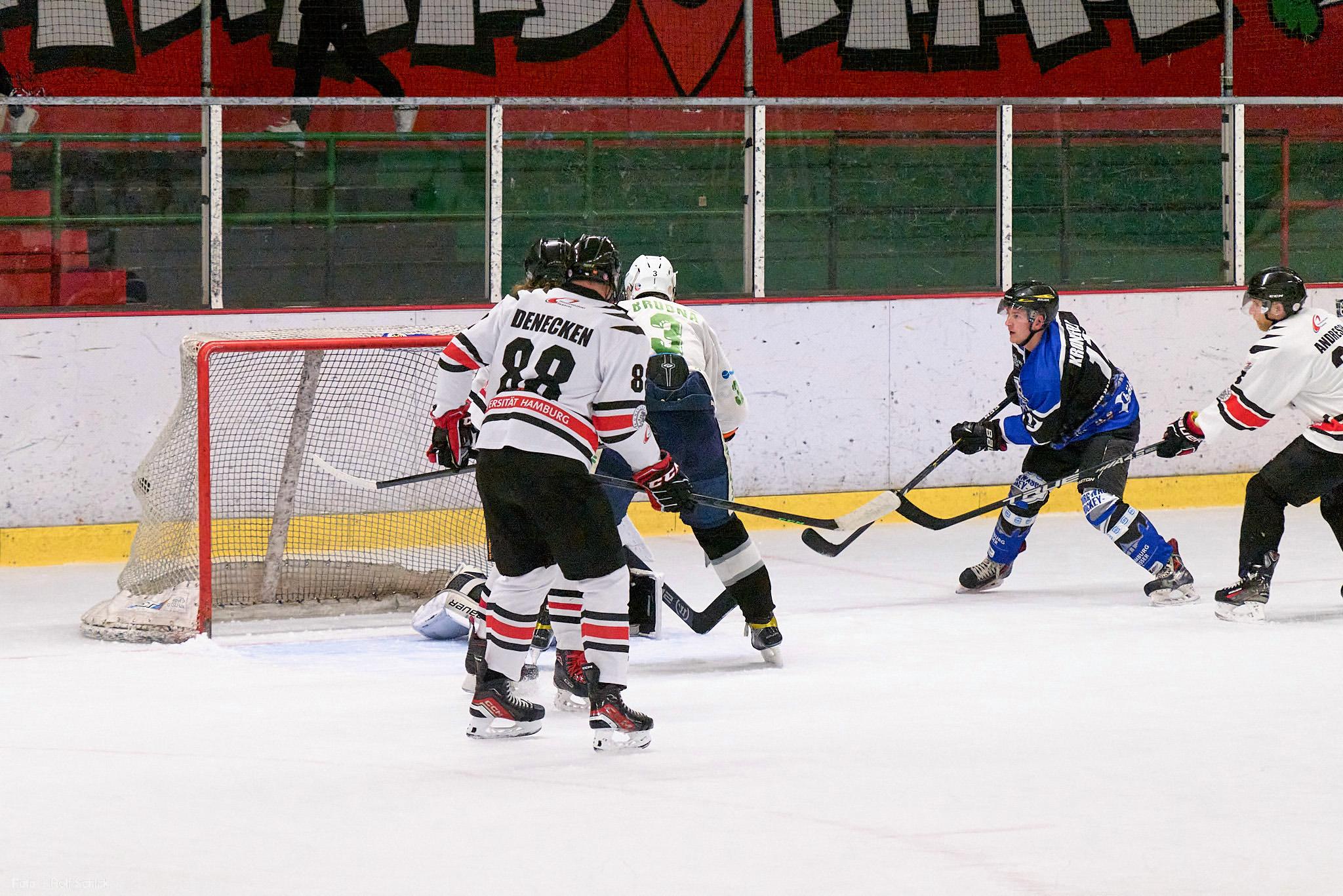
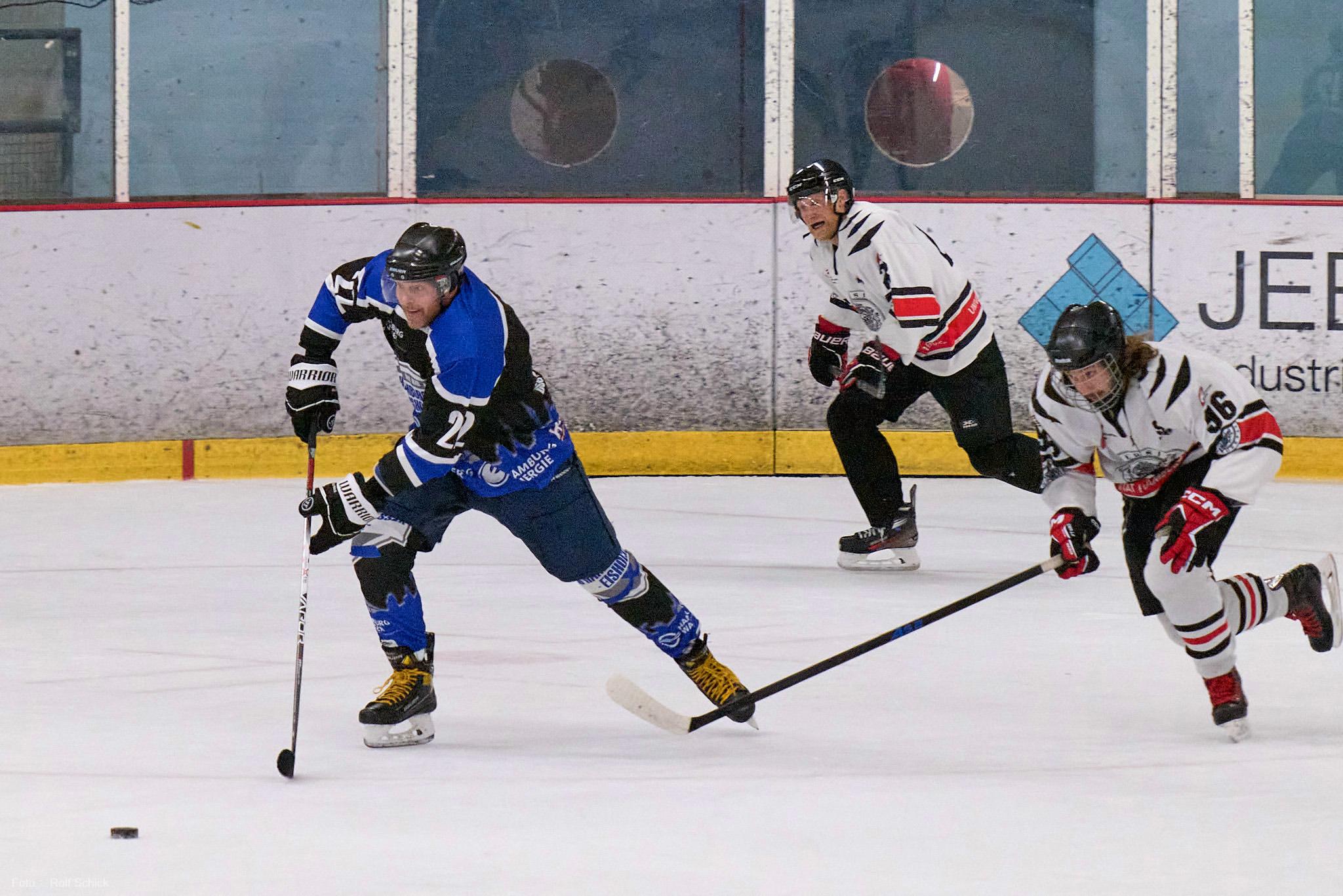
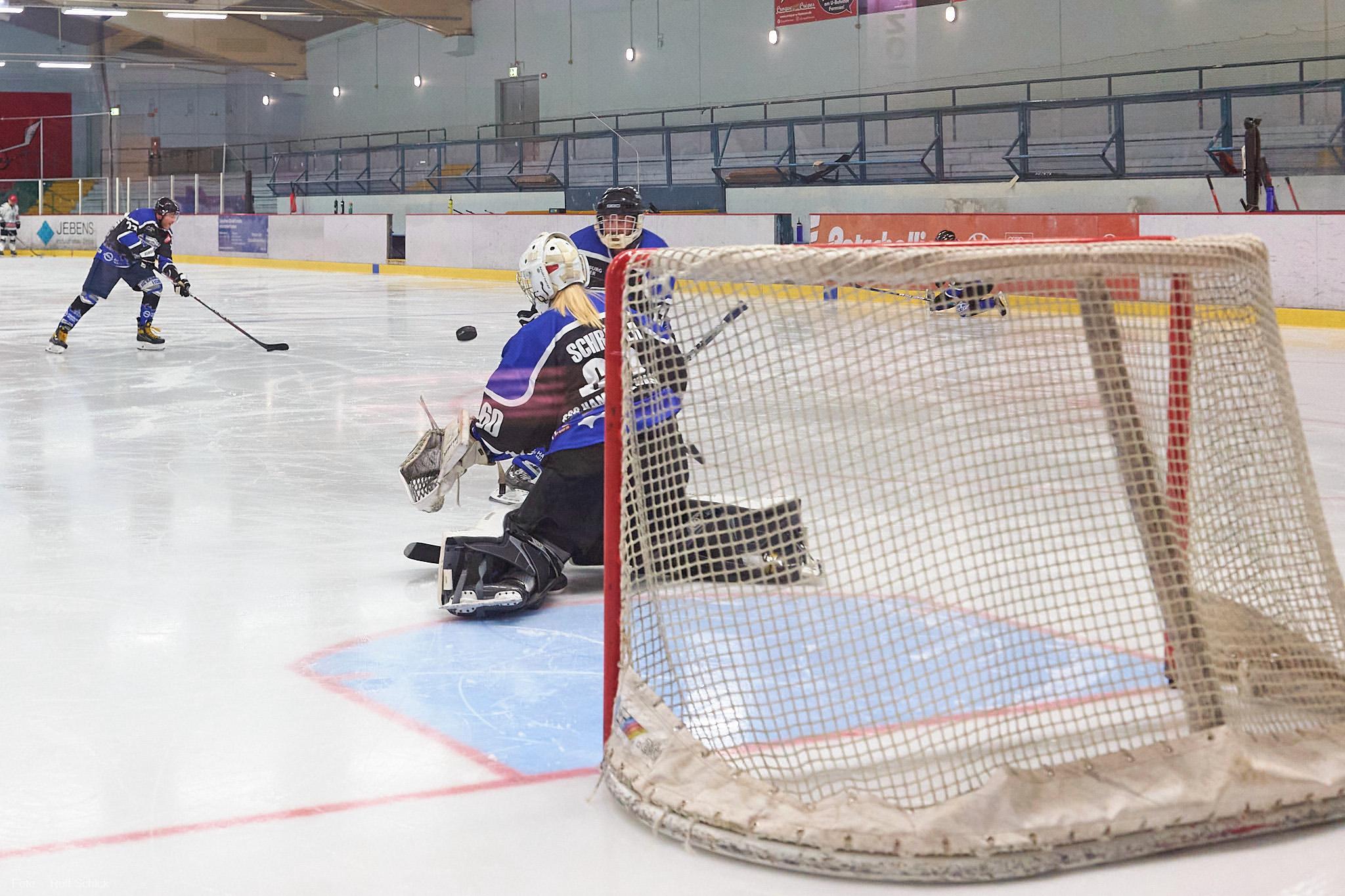
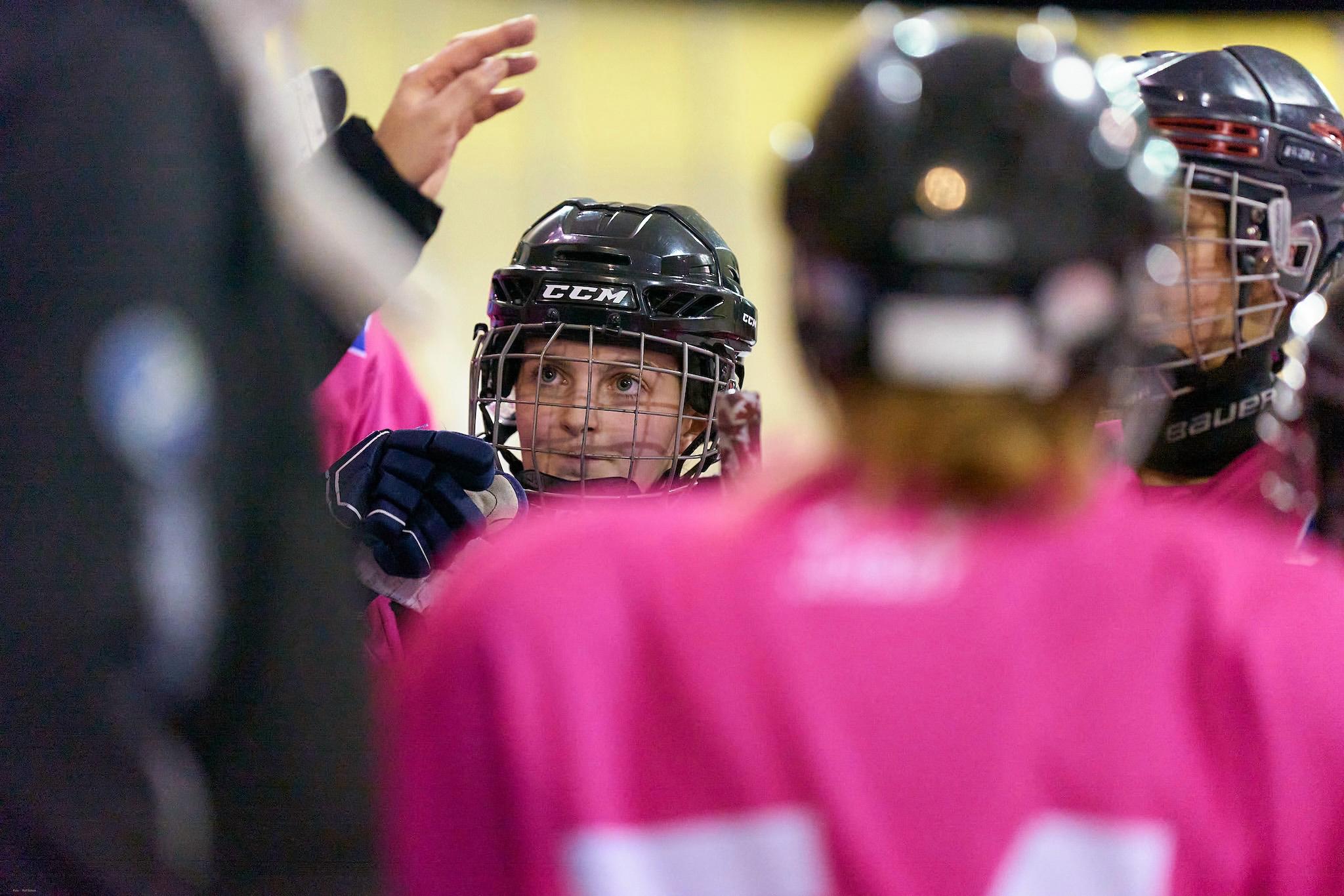




Some nice shots and thanks for the introduction to ice hockey!
Thank you, Andy! It’s a sport full of excitement and energy – even at the amateur level, and I’m happy to share a glimpse of it with you.
Hi Rolf. It’s good to see a new author landing at Macfilos. Really enjoyed your article. As someone with very little interest in sports, I nevertheless found the techniques fascinating. Lots of food for thought if I ever get the bug!
Jenny
Thank you so much for your kind words, Jenny! I’m thrilled to hear that you enjoyed the article despite not being a sports enthusiast. Do share your experience if you ever find yourself catching the bug 🙌
Hi Rolf, great story and photos! I have only tried photographing sporting events a few times, but that was outdoor in bright sunlight, so I did not have to contend with the issues you did. Thanks for the great explanation of your strategy. It worked really well! Regards, Jeff
Thank you, Jeff!
Thank you, from a grand pop whose gran daughters age 14/15 been playing since when they learned to walk, and a son in law in his fifties, who still plays! It’s like an addiction! Here in upstate NY w enclosed rinks u can play all year, except grand daughters whol are also field hockey and lacrosse players! I use q2m but never thought of trying on sports, get too involved in games to use camera! Now maybe I will!
Then I’m rooting for you, too, John! 🙌